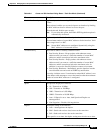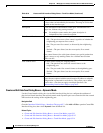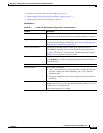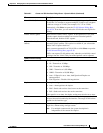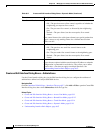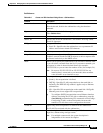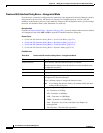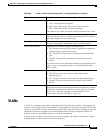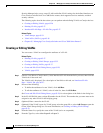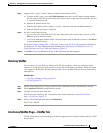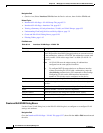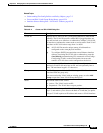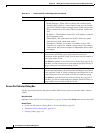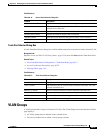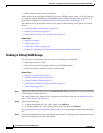
65-25
User Guide for Cisco Security Manager 4.4
OL-28826-01
Chapter 65 Managing Cisco Catalyst Switches and Cisco 7600 Series Routers
VLANs
VLANs
A VLAN is a switched network that is segmented logically instead of on the basis of geography. For
example, a VLAN might interconnect members of a geographically dispersed workgroup. VLANs offer
a practical convenience for many organizations because they reduce the need to rearrange the physical
placement of personnel, equipment, and network infrastructure. Properly configured VLANs are
scalable, secure, and can simplify the tasks of network management.
A VLAN consists of hosts and network devices (such as bridges and routers), connected by a single
bridging domain. Traffic between VLANs must be routed.
Duplex Displays the duplex setting of the interface:
• Auto—Autonegotiates the duplex.
• Half—Sends and receives data, but not at the same time
• Full—Sends and receives data at the same time.
If the speed is set to Auto, the duplex setting must also be set to Auto.
MTU Displays the maximum transmission unit, which refers to the largest
packet size (in bytes) that can be handled by the interface. The range of
valid values depends on the interface type.
Description Displays a text description of the interface. For multiple context mode,
the system description is independent of the context description.
Flow Control Receive Displays the flow control setting for incoming frames:
• Off—The port does not use flow control, regardless of whether the
neighboring port requests flow control.
• On—The port uses flow control, as dictated by the neighboring
port.
• Desired—The port allows, but does not require, flow control
frames.
Flow control frames (also called pause frames) are special packets that
signal a source to stop sending frames for a defined interval when
buffers are full.
Flow Control Send Displays the flow control setting for outgoing frames:
• Off—The port does not send flow control frames to the
neighboring port.
• On—The port sends flow control frames to the neighboring port.
• Desired—The port allows, but does not require, flow control
frames.
Roles Lists the interface roles associated with the interface. Interface roles are
objects that are replaced with the actual interface IP addresses when the
configuration is generated for each device. They allow you to define
generic rules—ones that can apply to multiple interfaces. See
Understanding Interface Role Objects, page 6-67.
Table 65-9 Create and Edit Interface Dialog Boxes—Unsupported Mode (Continued)
Element Description



